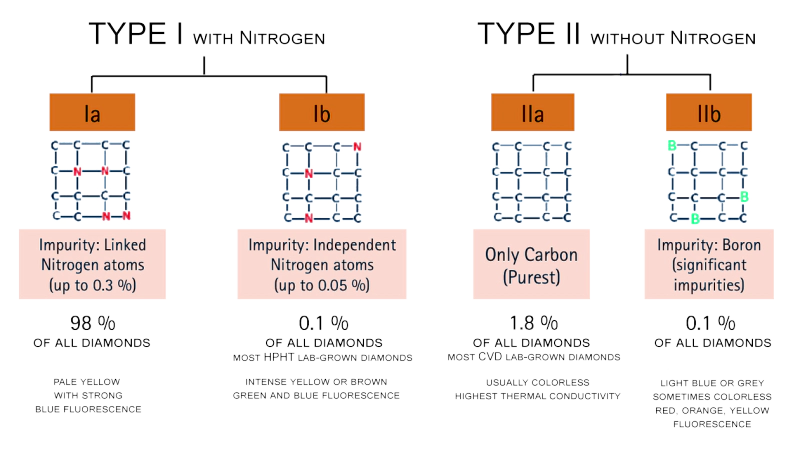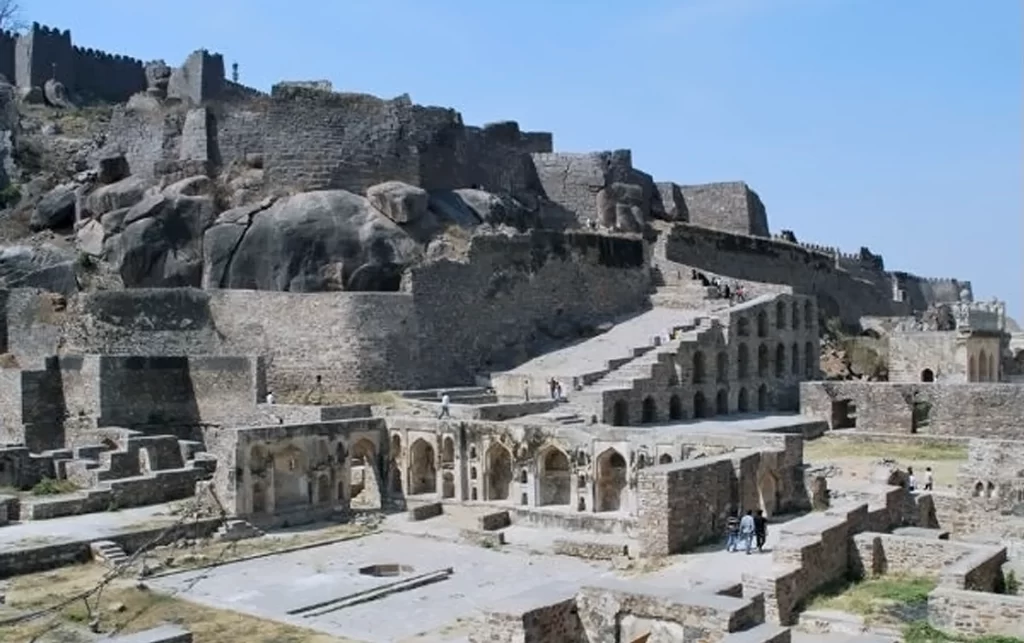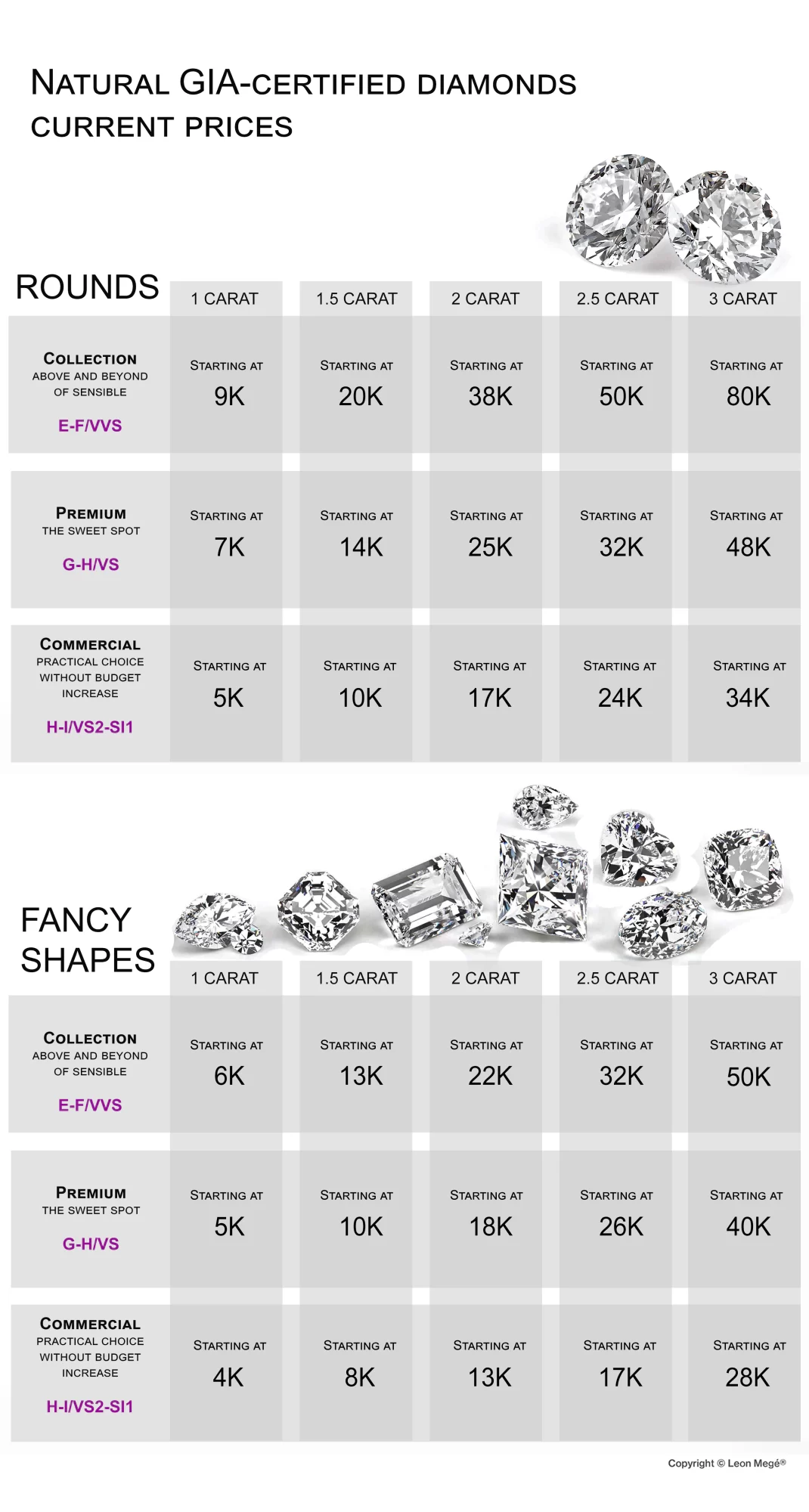
Diamonds are formed under high pressure in the middle layer between the surface crust and the central core of the Earth’s mantle. Most diamonds form at the base of the tectonic plates at depths of 80-120 miles. However, some rare “super-deep” diamonds originate deeper where the mantle slowly moves beneath the rigid and stable continental plates.
There are four diamond groups, but unlike the human assortment of blood types and rhesus factors, diamonds differ in their crystalline structure. Type II diamonds are the rarest and sought after by connoisseurs and collectors.
Type Ia diamonds contain clusters of Nitrogen atoms throughout the crystal structure. Those stones usually display some degree of yellow color. Nothing to write home about. These are the mainstream diamonds you typically see in jewelry.
Type Ib diamonds contain only Nitrogen atoms. These stones can have intense orange, brown, and sometimes green color.
Golconda diamonds
Type IIa, so-called Golconda diamonds, have no measurable impurities and lack Nitrogen in their crystal structure. They represent less than 2% of all-natural diamonds and are the most valuable. They are characteristically colorless, transparent, and exceptionally white. Colorless IIa diamonds are typically traced to the Golconda mine in India. Many famous diamonds are classified as Type IIa, including the Cullinan and Koh-i-Noor diamonds. Fancy-colored type IIa diamonds could be pink or purple.

Two thousand years before diamonds were discovered in Brazil and South Africa, the only source of diamonds in the world came from the Indian mines of Golconda. These famous mines are located near present-day Hyderabad and were named for the 14th-century Indian sultanate.
The “Golconda” designation suggests the stone’s origin can be traced to the historic mine. However, by the beginning of the 18th century, the mine had exhausted its supply of raw gems.
A disproportionate number of the world’s most famous diamonds came from Golconda; some of them are:
- The 105.6 carats (186 carats before a butchered attempt at re-cutting in 1852) Koh I Noor diamond adorning the Queen Mary’s crown during her 1911 coronation;
- The 410-carat Regent diamond – one of the last large diamonds to be found in India;
- The 70-carat Idol’s Eye, once paid in ransom by the sultan of Kashmir for the release of Princess Rashidah;
- The 32-carat Agra once adorned the Mughal emperor Babur’s turban;
- The 31-carats Wittelsbach, pawned to King Philip IV of Spain for the dowry of the Infanta Margarita Teresa
Type IIb diamonds contain traces of Boron within the crystal lattice. They are blue or blue/gray diamonds everyone is craving to collect. Boron-rich type IIb diamonds, such as the Hope diamond, are rare; less than 1 in a thousand is classified as type IIb. There has been uncertainty over whether “type IIb” diamonds larger than 3 carats formed in a shallow or deep environment.
- Type Ia encompasses roughly 98% of natural diamonds. They all have detectable traces of Nitrogen atom clusters. They are the most common type – 98% of all-natural diamonds.
- Type IIa and Type IIb stones are rare and usually sought after by connoisseurs and collectors.
- Are all D Flawless diamonds type IIa? Not necessarily, but most likely.

